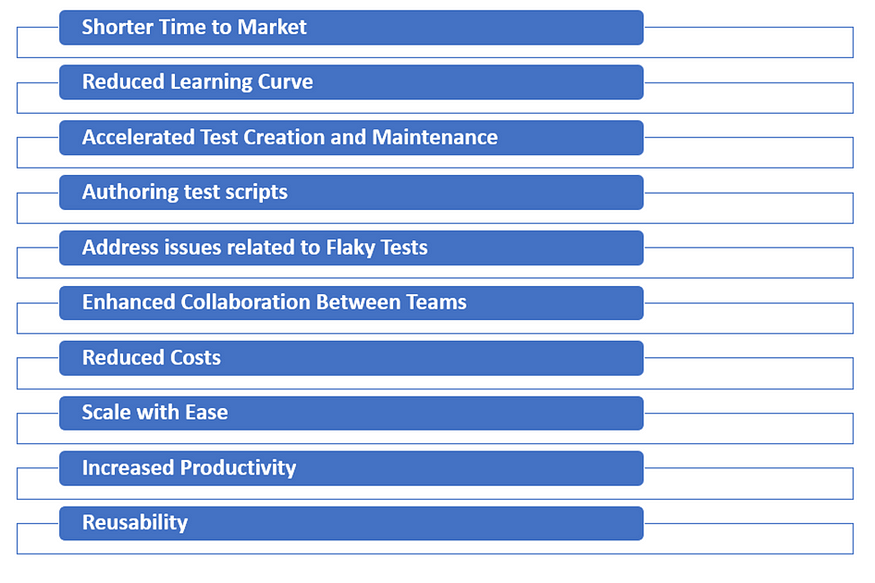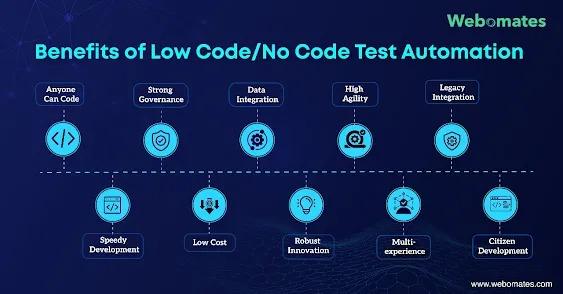Technology is the primary force behind any transformation. And the role of testing is changing, moving from being overlooked to becoming a value creator. In today’s world, it becomes extremely critical for enterprises to adapt to the fast-changing requirements and customer expectations.
Test Automation plays an important role in allowing businesses to boost productivity, develop new products rapidly, and enhance the development and testing process thereby leading to increased customer experience.
Many teams use Open-source platforms for their test automation. Although such platforms offer extensive customization, flexibility, and a broader community ecosystem, it’s essential to recognize the potential bottlenecks associated with them.
Bottlenecks of open source platforms:
- Requires a higher degree of proficiency in programming languages and frameworks.
- Creating and maintaining tests is time-consuming, especially for complex applications with frequent changes.
- Flaky tests along with factors such as synchronization issues, dynamic content, or environmental variations can contribute to the instability of tests.
- Open-source tools may require dedicated resources for script development, leading to higher costs.
- Scaling test automation efforts with open source tools is challenging especially when the application’s functionalities increase, leading to increased complexity.
- Test scripts in open-source tools may lack reusability.
- Developers need a lot of hands-on experience with programming languages before they can be productive.
- Development of applications takes more time.
Shifting to low code/no code platforms can offer a more accessible and efficient testing process, especially for teams looking to enhance collaboration and accelerate testing cycles.
Transforming the testing landscape with LC/NC platforms
Low-Code platforms, also known as low-code application development platforms, minimize or eliminate the manual coding required to develop and deploy software applications. They have a panel of visual elements that enable development without programming.
No-Code platforms allow people with no knowledge or technical training in software development to create applications without programming a single line of code.
Teams can use Low-Code/No-Code (LCNC) technologies to radically change how work gets done. It can enable teams to automate more tedious, error-prone processes that can occasionally take attention away from more strategic, higher-level work that adds greater value to the company.
According to the Mckinsey report, there will be 70% growth in the market and adoption of new application development that will leverage low-code/no code by 2025 (vs <25% in 2020).
Benefits of Low-Code/ No-Code Platforms

1. Shorter Time to Market
Less time is spent on development using such platforms. With code templates and pre-built features, you can significantly improve your application’s release time, resulting in a shorter time to market for new products. significantly
2. Reduced Learning Curve
It requires minimal coding experience and provides a visual interface and pre-built components making it easy to use. Using a component-based approach enables developers to develop applications without writing any code.
3. Accelerated Test Creation and Maintenance
Creating and maintaining tests is faster due to the drag-and-drop functionality and reusable components. This will ensure testing cycles are much faster compared to traditional test automation.
4. Authoring test scripts
Offers a visual interface and drag-and-drop functionality, reducing the time and effort required to author test cases.
5. Address issues related to Flaky Tests
The LC/NC platforms minimize the reliance on intricate coding and have features for handling dynamic elements and reducing the flaky tests. You can have AI-powered automation with self-healing capability to deal with synchronization issues or dynamic elements.
6. Enhanced Collaboration Between Teams
Quality increases when teams work together. These platforms encourage collaboration by allowing business analysts and testers to contribute to test automation efforts from very early stages, making the development and testing cycles more agile and focused on the end-user experience.
7. Reduced Costs
You can reduce the dependency of developers in creating UI tests. Testers can also contribute to automation, reducing the need for specialized development skills and associated costs of training.
8. Scale with Ease
These tools can handle complex test scenarios and also scale up or down according to the changing needs of the testing process.
9. Increased Productivity
Rather than spending hours coding, developers can be productive by focusing on more important business problems.
10. Reusability
These platforms emphasize on modular designs, allowing developers/testers to create reusable components. You can reuse the test flows across test plans. To know more about this blog : Benefits of low code test automation
